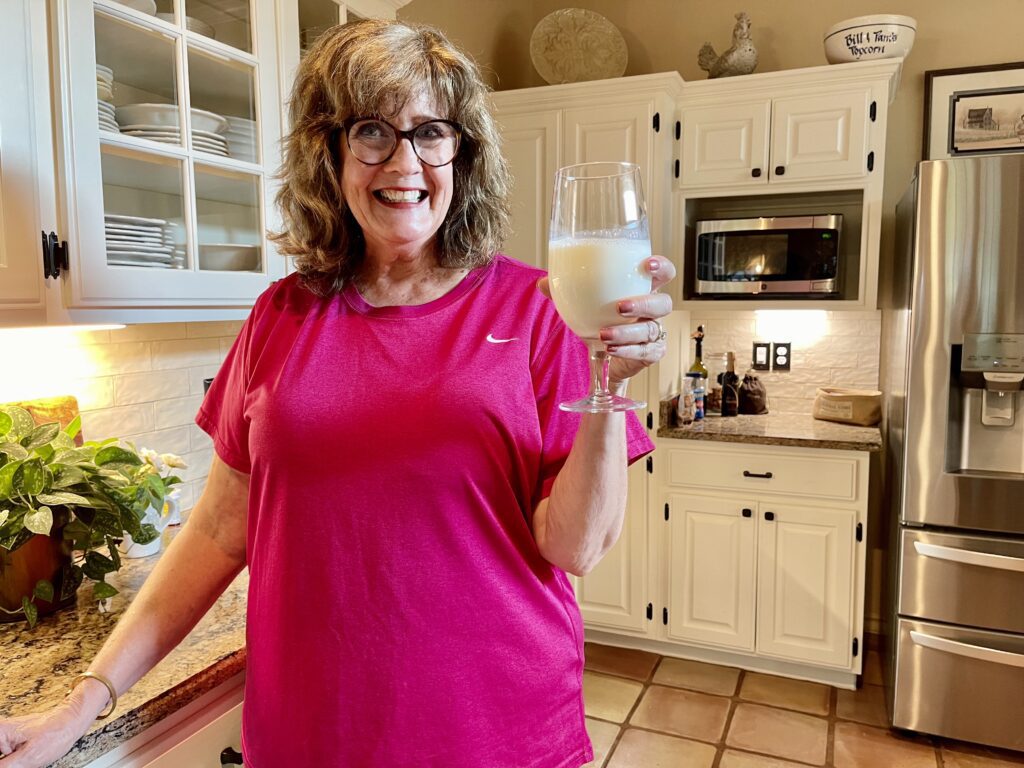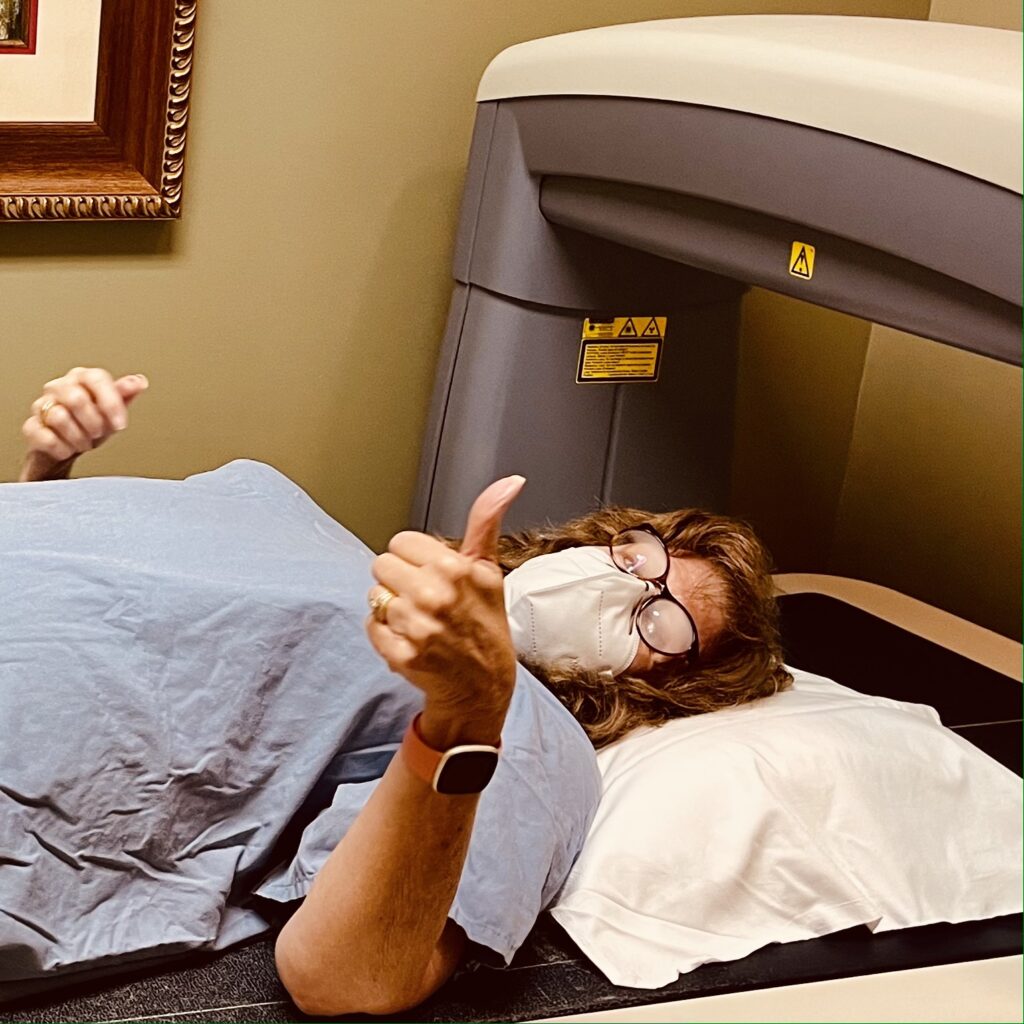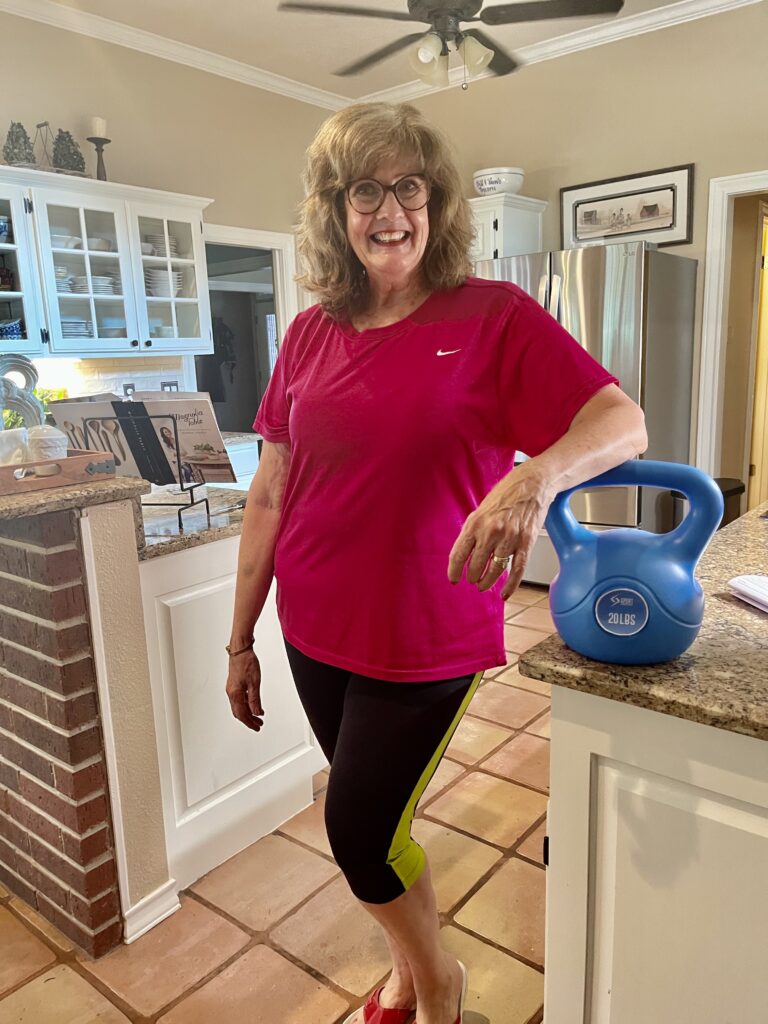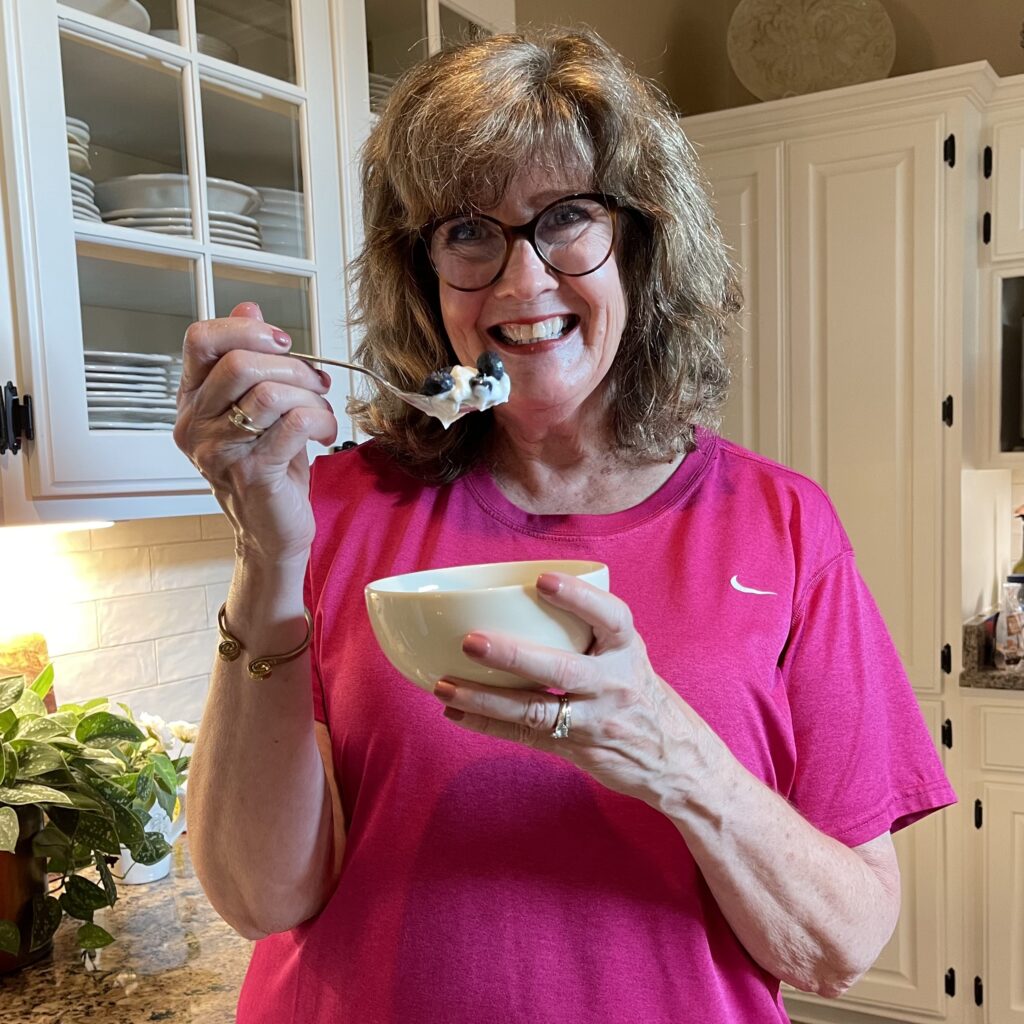On World Osteoporosis Day, be honest about bone health
Today, I am partnering again with Amgen to lift our milk glasses high and commemorate World Osteoporosis Day on October 20. This is a day to be honest with ourselves about our bone health and its importance to our overall good-health plan.
Many of us have spent the better part of the last two years worrying about the pandemic. While that is certainly very important, it should not replace our focus on maintaining healthy bones.
I’m excited to share the results from my latest DXA scan today and discuss how I believe the pandemic contributed to the results.
Here I am, just three months ago, getting my DXA scan on the exam table at my doctor’s office. I shared the story of my first DXA scan (which took place more than 8 years ago) last year on World Osteoporosis Day – you can read my original post here. The first scan caught my attention when it revealed early signs of bone loss.
A DXA scan, also known as a dual energy X-ray absorptiometry, is a non-invasive and simple test for screening and diagnosing osteoporosis.1 But why is it so important? Here are some reasons:
- Worldwide, 1 in 3 women over age 50 will experience an osteoporosis-related fracture.2
- Breaking a bone can be life-altering and lead to pain and loss of mobility.3
- Bone breaks can make simple, daily activities more difficult.4
- Postmenopausal women are especially at risk for osteoporosis.5
After my first DXA scan, I joined a gym and worked with trainers to build and maintain bone density through weight-bearing exercises and muscle-strengthening exercises.6 It worked, and my second scan indicated improvement in my bone density. I was doing what needed to be done.
However, a few years after that, COVID-19 and its variants became the focus, and my primary care doctor recommended I let my gym membership go. So, I left the gym, my trainers, and my workout partners. I began to use lighter weights at home, but confess that due to continued pandemic stress, I was unable to maintain my regular workout schedule. My main focus instead shifted to washing my hands and staying healthy during the pandemic.
My most recent DXA scan (pictured above) delivered the news: my hips are strong, but my spine is showing decreased bone density.
This is a major wake up call for me. I am now determined to once again turn things around. It is possible for all of us to focus on all facets of our health at the same time. We must do exactly that and not neglect our bone health.
We have so many factors to keep in mind…but we can do this, ladies!
In addition to being postmenopausal5, other risk factors associated with developing osteoporosis include:3,6
- Age 65 or older5
- Parent who had a hip fracture3,5
- Low body weight3,5
- Cigarette smoking3,5
- Vitamin D deficiency3,5
- Low calcium intake3,5
- Excessive alcohol intake (more than 3 drinks/day) 3,5
- Immobilization3,5
After a fracture, postmenopausal women are five times more likely to break another bone within a year.7
On this World Osteoporosis Day, please use my story as motivation to get a DXA scan, if you have not had one recently, and schedule it regularly every two years. I have learned the hard way how quickly bone loss can happen.
A DXA scan is painless and you do not even have to remove your clothing, but you do need to make sure no buttons or zippers cover the area that is being scanned.1
Stay informed and care for your overall health – which includes bone health.
- You can learn more about osteoporosis at TAKE CHARGE OF OSTEO.
- You can use the DOCTOR DISCUSSION GUIDE to help guide the bone health conversation with your healthcare provider.
Now, I have a lot of work to do!
KEEP SMILING, EVERYONE!
By Pamela Lutrell
Note: This post is part of a paid collaboration with Amgen. The content reflects my own personal opinions.
References
- National Osteoporosis Foundation. Bone Density Exam/Testing.
https://www.nof.org/patients/diagnosisinformation/bone-density-examtesting/.
Accessed August 10, 2021.
- International Osteoporosis Foundation. Facts and Statistics.
https://www.iofbonehealth.org/facts-statistics. Accessed August 10, 2021.
- Cosman F, de eur SJ, LeBoMS, et al. Clinician’s Guide to Prevention and Treatment of
Osteoporosis [published correction appears in Osteoporos Int. 2015 Jul;26(7):2045-7].
Osteoporos Int. 2014;25(10):23592381.
- Fischer S, Kapinos KA, Mulcahy A, Pinto L, Hayden O, Barron. Estimating the long-term
functional burden of osteoporosis-related fractures. Osteoporos Int. 2017;28(10):2843-2851.
- Camacho PM, Petak SM, Binkley N, et al. American Association Of Clinical
Endocrinologists/American College Of Endocrinology Clinical Practice Guidelines For
e Diagnosis And Treatment Of Postmenopausal Osteoporosis-2020 Update. Endocr
Pract. 2020;26(Suppl 1):1-46.
- National Osteoporosis Foundation. Exercise and Safe Movement.
https://www.nof.org/patients/treatment/exercisesafe-movement/. Accessed August 23,
2021.
- van Geel TA, van Helden S, Geusens PP, Winkens B, Dinant GJ. Clinical subsequent
fractures cluster in time after rst fractures. Ann Rheum Dis. 2009;68:99102.



